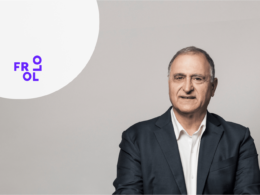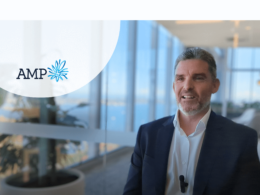Rob Hale
Chief Digital Officer, Regional Australia Bank
“Perhaps the biggest challenge is to
not get too carried away with automating
the life out of everything.”
Regional Australia Bank (RAB) became the first ADR in Australia under the CDR and is on track to becoming a Data Holder by the end of the year.
A customer-owned bank with more than 80,000 customers and a network of 40 locations across regional and coastal NSW, RAB has grown to be one of the premier banking alternatives to the Big Four banks.
Currently leveraging Open Banking for personal loan applications, RAB uses CDR to pull in real time, accurate financial data to help streamline the credit approval process – and make it easier for customers.
Why we wanted to talk to Rob
As Chief Digital Officer for RAB, Rob Hale is responsible for all technology platforms and interfaces that help the bank deliver customer services – from the mobile app to internet banking and fintech partnerships with wholesale service providers such as Douugh.
Rob has led RAB’s digital transformation for the past four years and has been on the Open Banking journey as early as 2017 when RAB decided to provide public comment on the Federal Treasury’s review into Open Banking. Rob has been at the helm of RAB’s early adoption of CDR, collaborating with the ACCC, the Big Four banks and other data recipients to test the ecosystem.
He’s also a member of the Consumer Data Standards Banking Advisory Committee and has become a champion of openly sharing learnings to help the industry leverage benefits and insights for the greater good of the Open Banking ecosystem.
RAB is the first ADR in Australia, why did you decide to become accredited?
We’re in a slightly different position to the institutions that most Australians bank with in that RAB is a customer-owned bank, and doesn’t have equity shareholders like a traditional ASX-listed bank. The fact that we don’t have any of that tension between what a customer wants versus what an investor wants provides a strong hint as to why we are so supportive of CDR.
Being an ADR means we can streamline processes, saving customers time and effort. Our initial CDR use case is designed to take the bad friction out of online lending – the uploading of bank statements and asking applicants to say how much they spend on education, transport, travel etc. We can automate that whole process which creates more time to have a human conversation about someone’s financial needs.
Being a Data Holder also has value in our minds – if our customers can get a service they like elsewhere, perhaps a Personal Financial Management (PFM) app like Frollo, then we want to facilitate their safe use of that tool. They’re still our customer and behaving like this is actually helping them, which we believe builds trust.
What excites you about the CDR opportunity?
RAB has been helping regional Australians achieve their lifestyle goals for over 50 years and CDR is now allowing us to continue doing that in new, innovative ways. The potential is huge. We’re all talking about the PFM and lending use cases because they’re the obvious ones, but the sky is the limit when you start thinking about how banking data can be applied to non-banking use cases.
For example, one of our Fintech partners, Basiq, just developed a proof of concept for a COVID-Safe tracker app, which basically uses CDR transaction data and merchant location data to identify if a person has been in a hotspot. Nobody ever thought of that a year ago, but it’s a good example of what you can do with the kind of information available through CDR.
What do you expect the impact of CDR to be in the next 12 – 24 months?
Unfortunately, what I think and what I hope for aren’t quite the same – just yet. I think that adoption is not going to grow exponentially straight away and that it will be much like the UK where it was a slow burn.
Having said that, Australia is good at adopting new technology and Australian consumers are good at having a go and getting onboard if it makes sense. So, the onus is on us to deliver services that make sense and add value to the consumer. I suspect it will be a couple of years before we can consider CDR to be a part of mainstream life.
As for the energy and telco sectors, that could be interesting because unlike other jurisdictions we’ve got legislation in place now to enable access to that data, and our unrestricted accreditation allows us to create new use cases as soon as it becomes available.
My dream is that we create and offer new lifestyle services that we haven’t even thought of yet. If we were to lower the barrier to entry – which is happening right now with the new rules and consultation process – we will have greater participation and in turn, more innovative use cases will come about. It’s important that it remains a safe, secure and trusted ecosystem and we can’t jeopardise that.
But by making it a true ecosystem, accessible to more players there will probably be a moment where we all sit back and say, ‘It’s working, it’s actually happening now.’ That will be a great day for Australian consumers.
Looking a few years ahead, what’s a potential use case that you would love to see?
One example would be around the affiliate accreditation that is currently under consultation. For example, if Douugh as a partner of ours accesses CDR data through an affiliate relationship, they could then use that for good to train up their automated AI financial assistant to help their customers live financially healthier lives – spending smarter, saving more and building wealth.
Douugh are already starting to do this in the US market with Open Banking aggregator, Plaid, but roll energy, telco and other data into the mix here in Australia, and things really get interesting. This approach gives customers a richer experience on day one, accelerating the AI learning before they even start using the service.
There are so many other use cases that can benefit consumers, for example, around health insurance, or getting a better deal on your gas or electricity supply and hospital extras covers. Using technology to marry product data with metadata that is readily available about institutions and then applying that data to information that consumers have opted to share about their lifestyle, behaviour and goals is exciting.
This could help to eliminate a lot of boring, mundane tasks for consumers and allow trusted service providers to suggest products and services that really are directly relevant to them.
What do you see as the biggest challenge in making CDR a success?
In financial services trust is important. RAB has focused on human trust through our relationship banking model and we know that, particularly for big lifestyle decisions like getting into your first home, people don’t necessarily want zero friction. They do want help with automating the tedious things like analysing income and expenditure, but when it comes to big decisions, they want to have a proper conversation with a human before they commit.
So, in that regard, perhaps the biggest challenge is to not get too carried away with automating the life out of everything. We need to strike the right balance – automate the mundane parts of the process so we create capacity for the more powerful and meaningful human interactions to take place.
What advice would you give other organisations, thinking about using CDR data to compete?
My advice is also a request. Share your experiences and contribute to the body of knowledge we are building to help make the Open Banking ecosystem better, together. We’ve shared almost everything we’ve done openly and publicly.
Collectively sharing what we are all doing, what works and what doesn’t, will accelerate adoption and participation in this ecosystem and make it more effective, more quickly – and we’ll all benefit from that.








